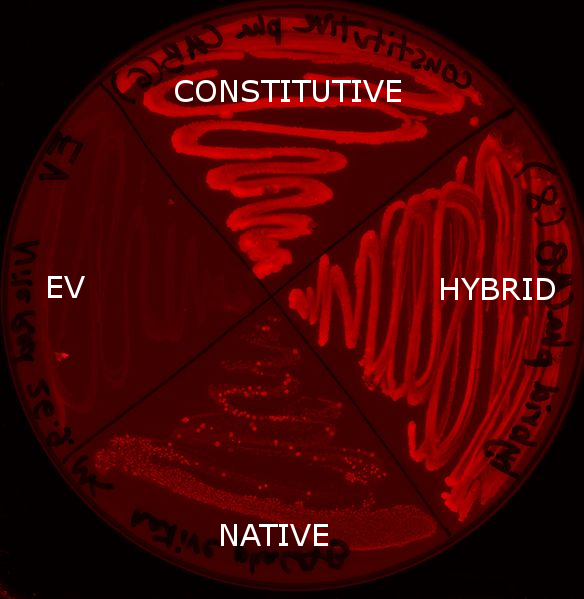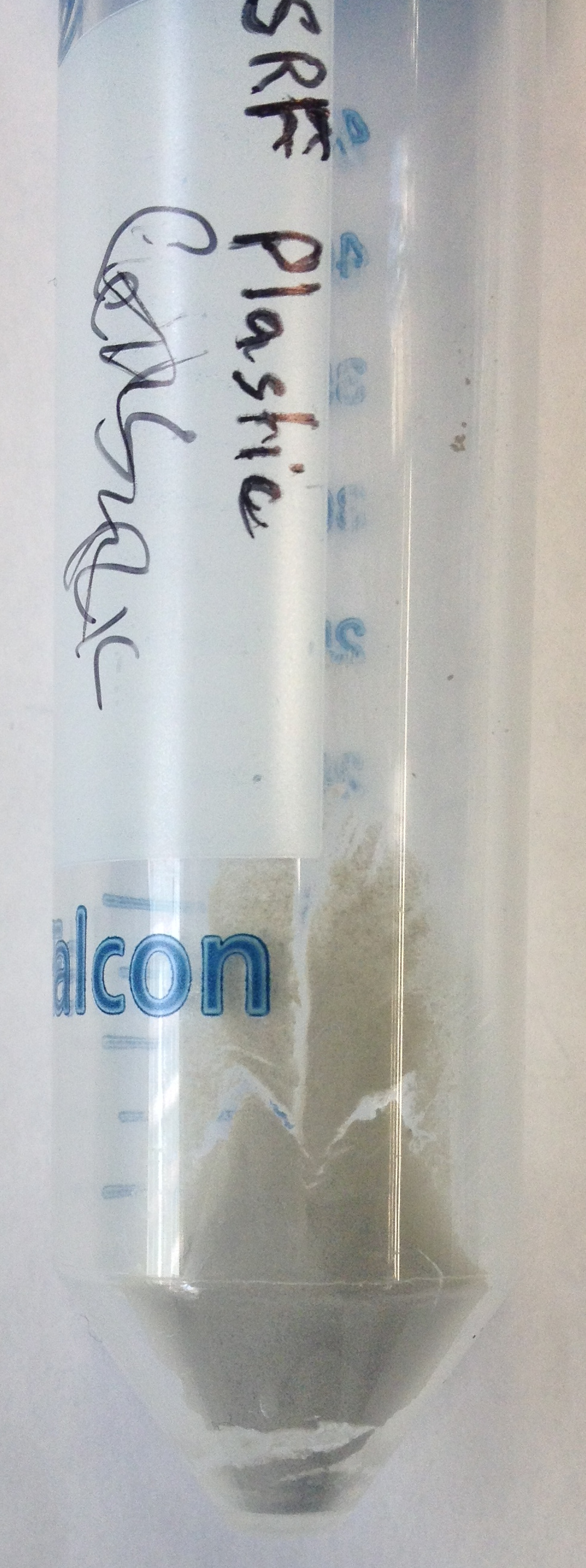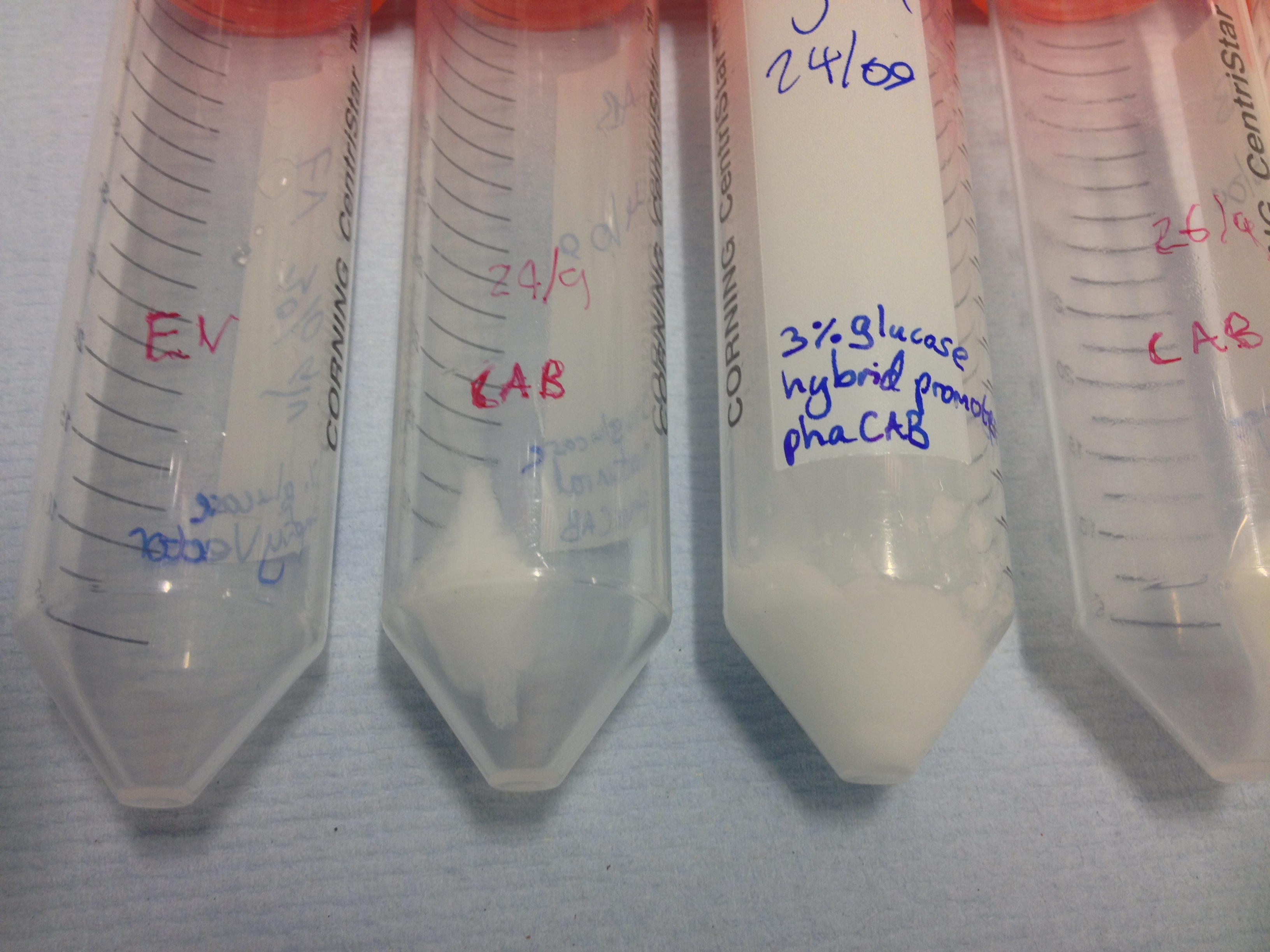Team:Imperial College/PHB production
From 2013.igem.org
(Difference between revisions)
Iain Bower (Talk | contribs) |
Iain Bower (Talk | contribs) |
||
| Line 6: | Line 6: | ||
<h2 class="clear">Nile red staining</h2> | <h2 class="clear">Nile red staining</h2> | ||
| - | O/N | + | O/N cultures of MG1655 transformed with either control or phaCAB plasmid were spread onto LB-agar plates with 3% glucose and Nile red staining. |
{| class="wikitable" style="margin: 1em auto 1em auto;" | {| class="wikitable" style="margin: 1em auto 1em auto;" | ||
|[[File:Nilered.JPG|thumbnail|right|400px|<b>Initial work with plastic synthesis in the native promoter.</b> Nile red staining was used to show expression of the plastic by fluorescence imaging. Control cells with empty vector are shown on the left, while native phaCAB transformed MG1655 is on the right.]] | |[[File:Nilered.JPG|thumbnail|right|400px|<b>Initial work with plastic synthesis in the native promoter.</b> Nile red staining was used to show expression of the plastic by fluorescence imaging. Control cells with empty vector are shown on the left, while native phaCAB transformed MG1655 is on the right.]] | ||
| Line 21: | Line 21: | ||
|[[File:Plasticfrommixedwaste.jpg|thumbnail|center|250px|P(3HB) purified from phaCAB transformed MG1655 that were grown in M9M mixed waste.]] | |[[File:Plasticfrommixedwaste.jpg|thumbnail|center|250px|P(3HB) purified from phaCAB transformed MG1655 that were grown in M9M mixed waste.]] | ||
|} | |} | ||
| + | |||
| + | {| class="wikitable" style="margin: 1em auto 1em auto;" | ||
| + | |[[File:EV-phaCAB-hybrid.JPG|thumbnail|left|500px|<b>Comparison of P3HB production </b> P3HB extracted from E.coli MG1655 with pSB1C3 containing nothing, natural phaCAB(BBa_K934001) and phaCAB expressed from the hybrid promoter, (BBa_K1149051). Each produced in 300ml cultures of LB with 3% glucose after one night growing at 37 degrees celsius.]] | ||
| + | |} | ||
| + | |||
| + | |||
{{:Team:Imperial_College/Templates:footer}} | {{:Team:Imperial_College/Templates:footer}} | ||
Revision as of 20:30, 29 September 2013
PHB production
During our project we successfully synthesised the bioplastic P(3HB).
Nile red staining
O/N cultures of MG1655 transformed with either control or phaCAB plasmid were spread onto LB-agar plates with 3% glucose and Nile red staining.
Conclusion: The red staining indicates the production of P(3HB). More importantly our new Biobricks hybrid promoter phaCAB BBa_K1149051 and constitutive phaCAB BBa_K1149052 produce more P(3HB) than the native phaCAB operon
Purification of P3HB
 "
"








